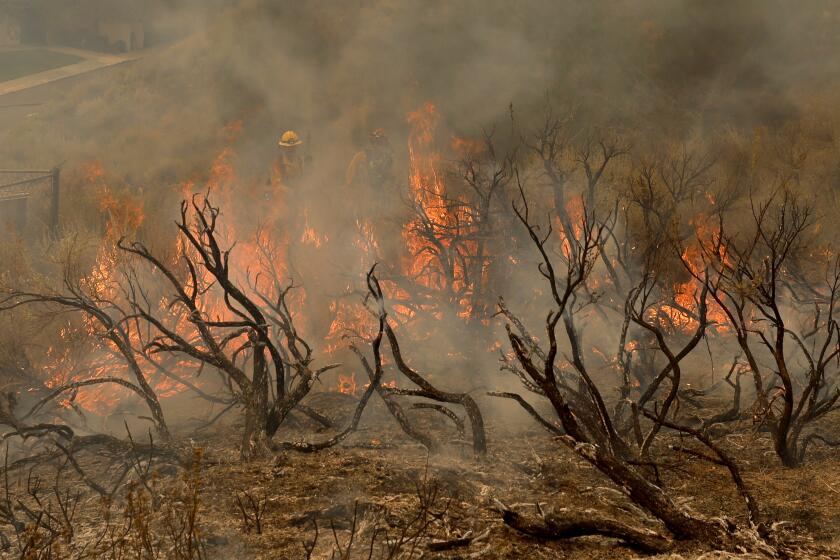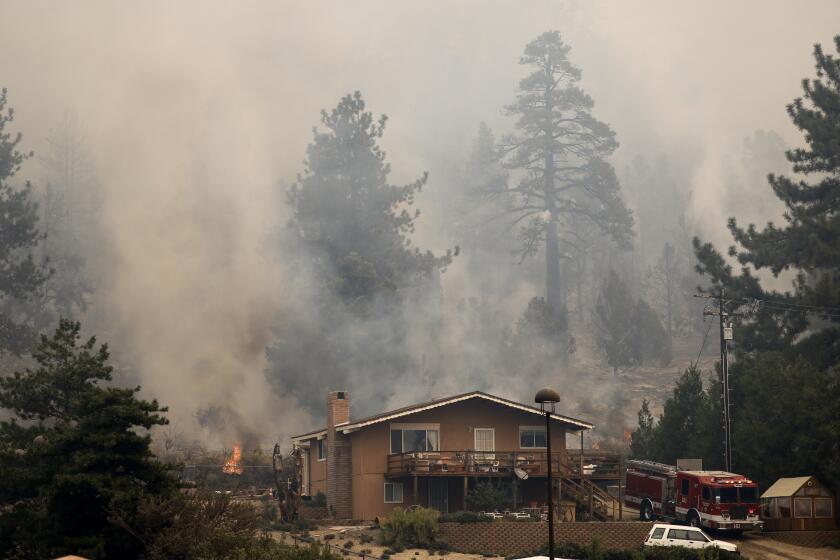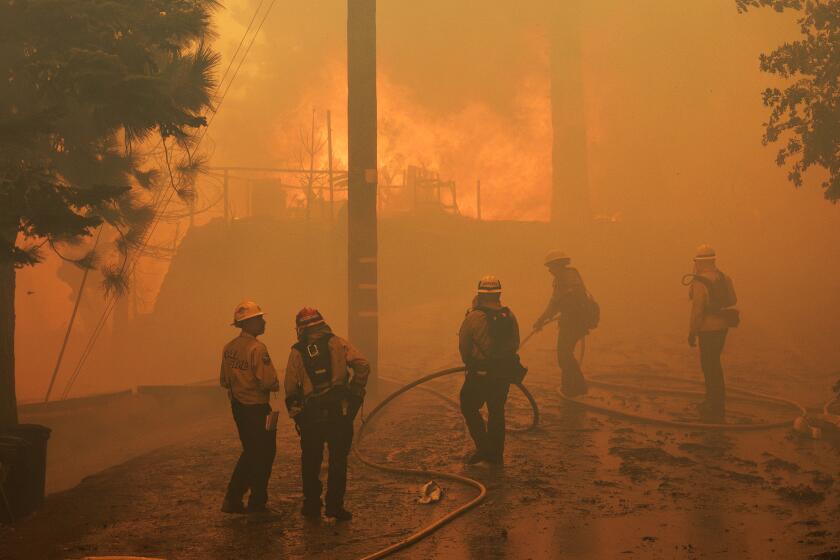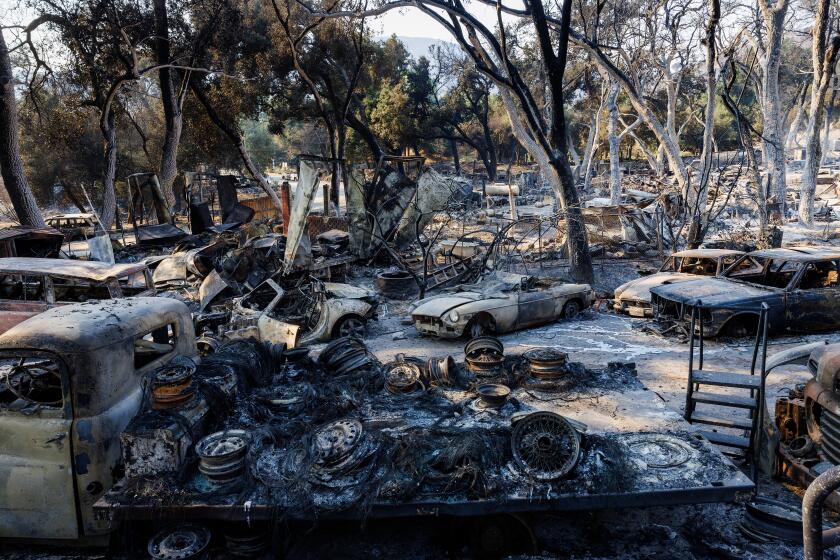Containment, hotshots, evacuation orders: Understanding key wildfire terms
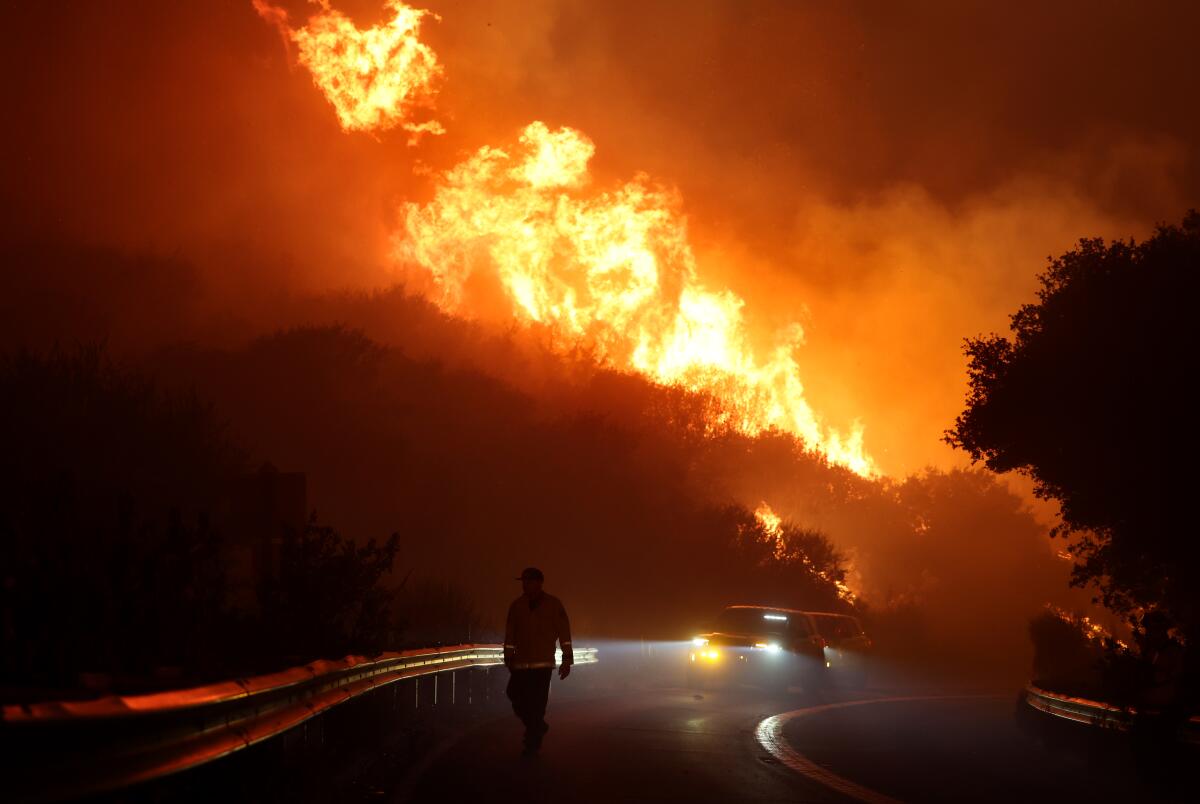
- Share via
As the Line, Bridge and Airport fires have raged in Southern California, the news has been filled with reports about the lack of containment and the communities under evacuation warnings and orders.
But what, exactly, does all that mean? Here’s a quick guide to many of the terms that public safety officials use to describe the progress of wildfires, the efforts to stop them and the measures taken to protect residents.
Residents were coming to terms with the losses as firefighters tried to slow destructive brush fires ripping through the mountains of Southern California.
Percent contained: In the firefighting world, containment means a certain level of control — specifically, how much of the fire’s edge, or perimeter, firefighters believe they can stop from expanding. A natural barrier such as a river or creek can help. So can human interventions such as using a bulldozer to scrape the vegetation off a swath of land to deprive the fire of fuel it could use to grow.
That’s why even when a fire is 100% contained, it can still be blackening acres of land, and firefighters can still be battling to keep it from getting out of control. The percentage is simply firefighters telling the public how much of the fire perimeter they believe will not go beyond their defenses.
One X factor is the wind. Unlike fires that grow based on topography or that follow the path of fuel they’re burning, extreme wind-driven fires are notoriously difficult to contain until winds die down.
The 48,000-acre Bridge fire, which remains uncontained, has become the largest and highest-priority fire in California, officials said.
Contingency line. Firefighters often set up layers of defense called contingency lines some distance from the fire’s perimeter. They will clear the ground down to the dirt on ridge tops as much as a mile away from a fire’s edge to set up a position for a potential future defensive stand. Meanwhile, they work their way closer to the fire, laying lines of fire retardant and using bulldozers, shovels, axes and chainsaws to clear vegetation.
Controlled. After reaching 100% containment — which can take months, depending on the weather conditions, the fire’s size and the area’s topography — crews work toward declaring the fire controlled.
When a fire is controlled, it’s essentially out. Authorities will no longer assign crews to the blaze and will instead send a patrol out daily to ensure no scorched areas rekindle and start another fire.
An overview of evacuation orders, shelter options, mental health resources, donation info and more for the Airport, Bridge and Line fires in Southern California.
Evacuation order. This is a lawful order to leave immediately, stemming from an imminent threat to life. An area subject to an evacuation order is closed to public access, and people who defy the order can be charged with a misdemeanor — in addition to being caught in traffic along the escape route.
Evacuation warning. If an evacuation order means “go,” an evacuation warning is the equivalent of “get set.” It indicates that an area faces a potential threat to life and property, so people there should be ready to leave at a moment’s notice. People who need more time to evacuate, such as those with limited mobility or who have pets or livestock, should evacuate immediately.
Shelter in place. This instruction means that it’s risky to be outdoors, but safe to remain on your property. The California Governor’s Office of Emergency Services says that when a shelter-in-place order is issued, people should stay indoors, with their doors and windows shut and locked, until further notice.
‘I am crossing my fingers, we are OK for now.’ Residents near Lake Elsinore wait out the flames as the Airport fire burns tens of thousands of acres.
News reports may also mention several different types of firefighting crews.
A hand crew builds fire containment lines by using chainsaws and other hand tools, as well as burning areas with devices such as drip torches — a device that’s halfway between a lighter and a flamethrower. These crews also do mop-up and cleanup work. Interagency hotshot crews are highly trained hand crews sent to help fight particularly challenging fires.
An engine crew, meanwhile, rolls to the fire line with a fire engine to pump water or fire-suppressing foam onto a blaze. And a fuel crew works to eliminate vegetation that could feed an advancing fire, possibly through controlled burns.
More to Read
Sign up for Essential California
The most important California stories and recommendations in your inbox every morning.
You may occasionally receive promotional content from the Los Angeles Times.
